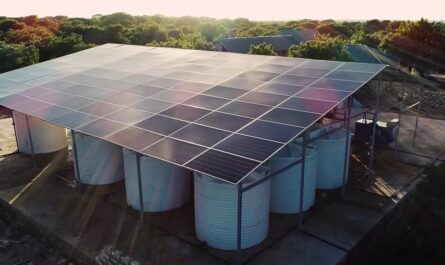Soybeans are a crucial crop with widespread applications in the food, animal feed, industrial, and biofuel sectors. Therefore, even small improvements in the soybean seed content can have significant implications for global agricultural productivity and economies.
A recent study led by Dr. Doug Allen, a scientist at the USDA-Agricultural Research Service and member at the Donald Danforth Plant Science Center, has uncovered a vital role played by the enzyme malic enzyme in boosting soybean oil production. The findings of their research, titled “Expression of malic enzyme reveals subcellular carbon partitioning for storage reserve production in soybeans,” were published in the journal New Phytologist.
Dr. Stewart Morley, a postdoctoral associate in the Allen Lab, led the research team in investigating the impact of malic enzyme on soybean seed composition. Malic enzyme is a key component of central carbon metabolism, which refers to the chemical reactions taking place inside cells to convert energy into the necessary building blocks for proper cell growth and function.
The researchers discovered that malic enzyme serves as a bridge between two crucial metabolite nodes in central metabolism, influencing carbon allocation and boosting oil production. By enhancing malic enzyme activity, soybean seed oil levels increased, and the fatty acid profile within the bean was altered. These findings could have significant implications for the development of sustainable green fuels and petroleum replacements.
Dr. Morley described malic enzyme as an elegant solution to increasing oil content in soybeans. The study demonstrates that strategically manipulating a single enzymatic step can enhance oil production, providing a promising avenue for research. The team’s work is based on previous metabolic flux studies conducted in the lab.
The publication of this research received a commentary from Dr. Jorg Schwender, a senior scientist at the Brookhaven National Laboratory. Dr. Schwender noted that the study successfully put the insights gained into the delivery of metabolic precursors and energy cofactors to the test, demonstrating successful metabolic engineering design.
The research heavily relied on advanced core facilities at the Donald Danforth Plant Science Center, including the Mass Spectrometry and Proteomics and Plant Growth facilities, as well as the Advanced Bioimaging Laboratory. Dr. Allen emphasized the importance of leveraging the expertise and instrumentation available at the center to produce impactful and rigorous scientific research.
Collaboration with institutions such as the University of Nebraska-Lincoln and Saint Louis Community College was also instrumental in the study’s success. These institutions provided access to a specific digital droplet qPCR instrument, which the researchers used to determine the expression levels of malic enzyme. The support and collaboration of others in these facilities and academic institutions were essential for the research.
Dr. Morley plans to explore further avenues for enhancing soybean oil production, such as crossing malic enzyme-modified soybean lines with other lines engineered to boost oil production. This approach could potentially unlock even greater gains in lipid production.
The implications of this research are promising, as it opens up the possibility of tailoring soybean crops to meet evolving market demands and contribute to sustainable agriculture, food security, and renewable energy production. Furthermore, the insights gained from this study could extend beyond soybeans and offer valuable information for lipid production in other crops. Leveraging genetic engineering to improve seed quality could be a game-changer for various agricultural sectors.




